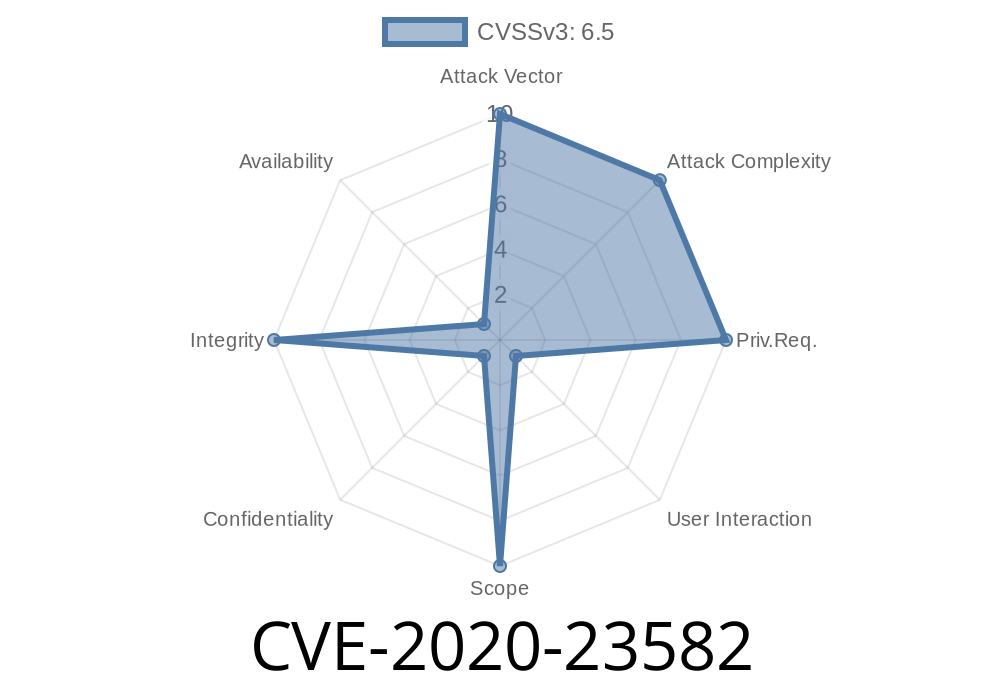A recent vulnerability, identified as CVE-2020-23582, has emerged in the web administration interface of the Optilink OP-XT71000N version V2.2, which could allow a remote attacker to conduct a cross-site request forgery (CSRF) attack. In this post, we'll discuss this vulnerability in detail, including its exploitation process and its impact on affected systems.
Optilink OP-XT71000N Overview
Optilink OP-XT71000N is a wireless network device designed for large-scale networking solutions. It is commonly used in corporate environments and public hotspots, and its web administration interface allows setting up and managing various network configurations.
CVE-2020-23582 Description
The vulnerability lies in the /admin/wlmultipleap.asp file of the web administration interface, and it enables the attacker to create Multiple WLAN BSSID without any authentication. This can cause potential data breaches and network instability.
The flaw is specific to version V2.2 of the device, which lacks proper verification for incoming HTTP requests. As a result, an attacker can craft malicious web requests with CSRF payloads that will be executed by a victim's browser when visiting a booby-trapped site.
Here's a simple code snippet demonstrating a possible CSRF attack exploiting the vulnerability
<!DOCTYPE html>
<html>
<body>
<h1>Hidden CSRF Form</h1>
<form action="http://TARGET_IP/admin/formconfigservdata.cgi"; method="POST" enctype="multipart/form-data" id="csrf_form">
<input type="hidden" name="WebSyncToken" value="12345678" />
<input type="hidden" name="MultipleAP" value="NEW_WLAN_NAME" />
...
</form>
<script>
document.getElementById("csrf_form").submit();
</script>
</body>
</html>
This HTML code creates a hidden form targeting the /admin/formconfigservdata.cgi endpoint, which is responsible for configuring network settings. It then injects a malicious payload in the form of BSSID and sets the appropriate values. Finally, the form is submitted automatically by JavaScript, wreaking havoc on the victim's device.
Exploit Process
1. The attacker crafts a malicious HTML file containing a hidden CSRF form, as shown in the earlier code snippet, and hosts it on a publicly accessible web server.
2. The attacker sends a phishing email or leverages another social engineering technique to lure the victim (an administrator of the target Optilink OP-XT71000N device) into clicking a link pointing to the malicious HTML page.
3. When the victim clicks the link, their browser opens the malicious page and automatically submits the CSRF form.
4. The victim's browser sends an HTTP POST request, containing the malicious payload, to the vulnerable URL on the target device.
5. The vulnerable server processes the attacker's payload, creating a new WLAN BSSID with the specified values.
6. The attacker now has control over the target network and can potentially gain access to sensitive information or further compromise the network.
For additional details on CVE-2020-23582, visit the following resources
- Original Advisory by Piotr Madej
- CVE-2020-23582 Details from CVE-Mitre
Conclusion
CVE-2020-23582 demonstrates the importance of validating user input, especially in critical systems like network devices. It is crucial to require authentication for any configuration changes, and devise administrators should take protective measures such as CSRF tokens to prevent CSRF attacks.
Administrators of Optilink OP-XT71000N devices should contact the manufacturer for a patch addressing this vulnerability and ensure proper security measures are in place to protect against such attacks.
Timeline
Published on: 11/21/2022 21:15:00 UTC
Last modified on: 11/23/2022 18:28:00 UTC
